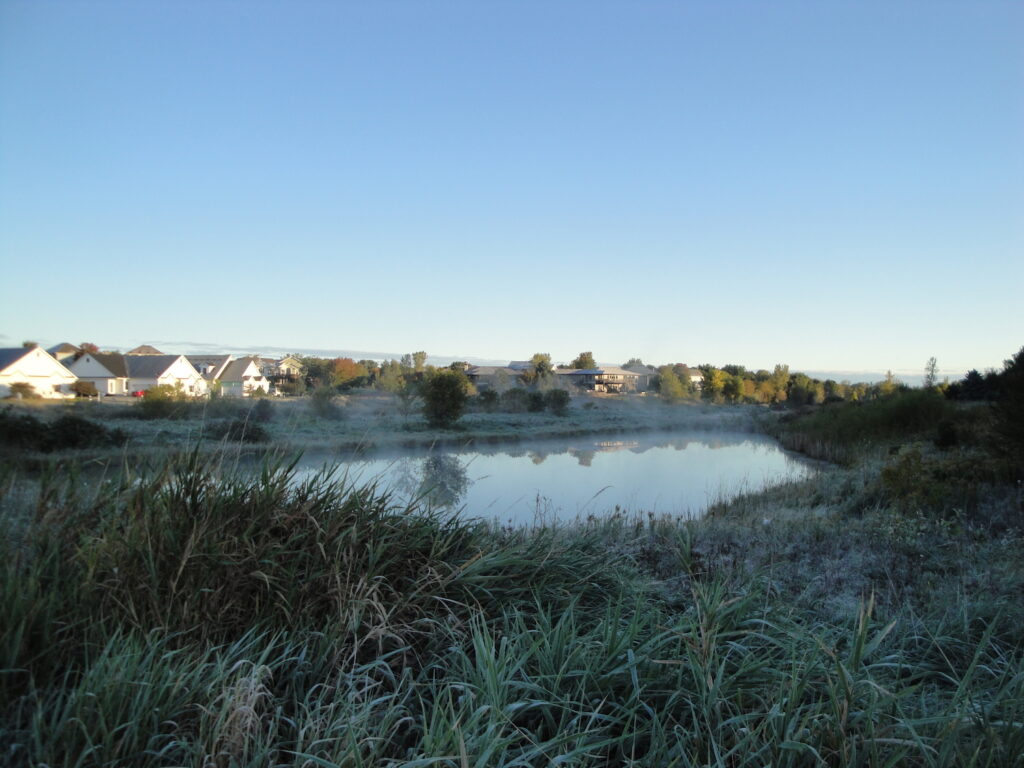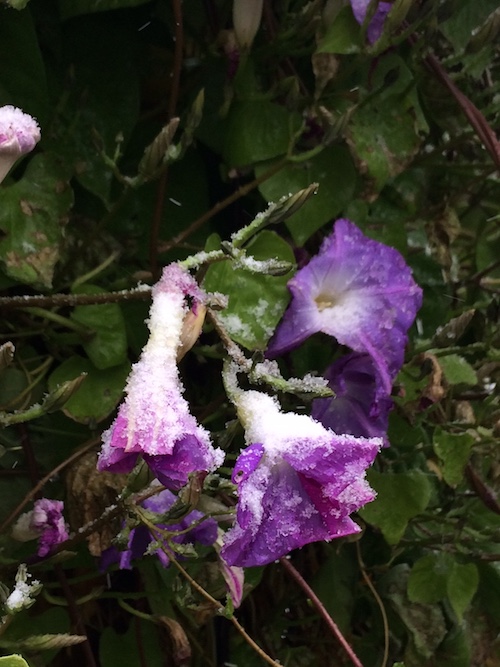Understanding Frosts, Freezes and Hard Freezes
The weather folks were invoking the “F” word the other night — frost, which may hit the Twin Cities Friday night. The rest of the state will have variations on frosts, freezes and hard freezes. For northern gardeners, understanding the differences between these three events and what you should do in order to keep your garden growing is important.
Here’s the break down on what each term means:
Frost
Frost is a light coating of ice formed on solid surfaces, such as leaves, blooms and blades of grass. As the air gets cooler, water droplets in the air condense on surfaces and freeze. In Minnesota, frost warnings are typically issued when the overnight low is expected to drop to 36 or lower for several hours. Now, you may be thinking, wait a minute–how can the water freeze if the air temperature is above freezing (32 degrees Farenheit)? The answer is that while the official air temperature is above freezing, those readings are taken above the ground. (Six feet above ground, according to this source.) Temperatures are lower near the ground and lower still in low-lying areas of your yard and garden. That’s why frost tends to form in lower areas of the yard quicker and for a longer time.
What to about frost? If you have not already brought any houseplants indoors, now is a good time to do it. Be sure to clean the pot and the plant to avoid bringing in pests, and if you have a good spot for it, you may want to quarantine houseplants for a couple of weeks. If you still have tomatoes, tender annuals or other summer plants you don’t want to lose, cover them up.


Freeze
A freeze is when the air temperatures sink to between 28 and 32 degrees and stay there for a four or more hours. For many summer season plants (tomatoes, petunias, etc.), this will mark the end of the growing season unless they are covered and kept warm.
What to do about a freeze? Get out all the blankets to cover anything that is not frost-hardy that you want to have continue to grow (or at least, look good). Some vegetables, such as Brussels sprouts, kale and parsnips, actually taste sweeter after a freeze. Things like peppers and tomatoes that have not been picked should be. You can sometimes ripen tomatoes on the counter to an acceptable (if not fabulous) flavor. You may also want to empty your birdbath or any small water features that could freeze and crack.
Hard Freeze
A hard freeze occurs when the air temperature falls below 28 degrees and stays there for four or more hours. This usually signals the end of the growing season for most plants in Minnesota.
What to do after a hard freeze? It’s time to go into full fall gardening mode. Clean up the plant corpses in the yard, do a really, really good weeding, plan that day trip to see the fall leaves turning because that will be happening before you know it.

One Comment
-
Pingback: Plant Profile: Sweet Potato - Minnesota State Horticultural Society
Back to Blog